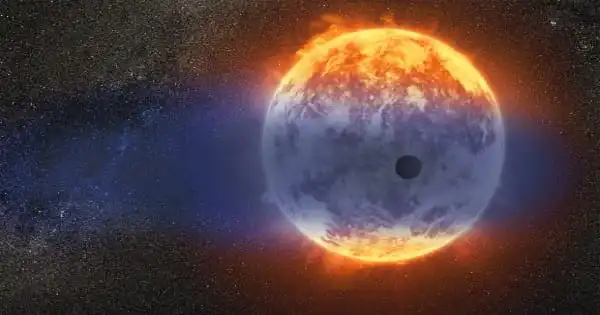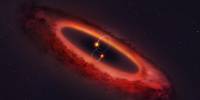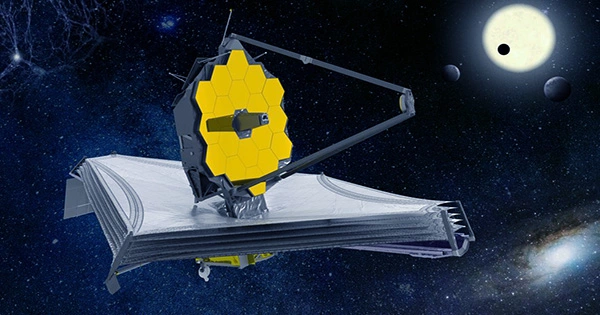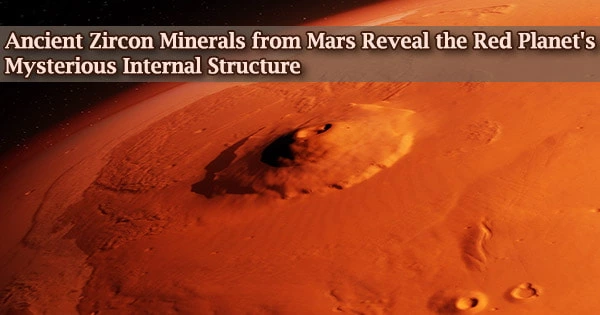Gliese 3470 b is an exoplanet that orbits the star Gliese 3470 in the Cancer constellation. It is an exoplanet similar to Neptune that orbits an M-type star. It has a mass of 13.9 Earths, takes 3.3 days to complete one circle around its star, and is 0.0355 AU away from it. With a mass of slightly less than 14 Earth masses and a radius of 4.3 times that of Earth, it is most likely a mini-Neptune, despite the initial strong opinion that the planet was not cloud-covered like the gas giants we are accustomed with in our solar system. It was discovered in 2012, and its finding was announced.
The orbit of Gliese 3470 b is strongly inclined to the equatorial plane of the parent star, with misalignment equal to 97+16−11◦. It orbits star Gliese 3470 that lies 96 light-years away from the Sun. It weighs about 12.7 Earth masses and orbits its star much closer than Earth orbits Sun.
Atmosphere
The atmosphere of Gliese 3470 b is one of the best spectroscopically characterized among all exoplanets.
Gliese 3470b resembles a cross between Earth and Neptune, with a large rocky core buried under a deep, crushing hydrogen and helium atmosphere. Its mass is 12.6 times that of Earth, but somewhat less than that of Neptune, which weighs in at 17 Earth masses.
The atmosphere of the exoplanet was originally spotted by researchers Akihiko Fukui, Norio Narita, and Kenji Kuroda of the University of Tokyo in 2013, and Fukui later noted, “If the atmosphere is made primarily of hydrogen and helium, its mass would be 5–20 percent of the total mass of the planet. When compared to the fact that the bulk of the Earth’s atmosphere is around one-tenth of one percent of the entire mass of the Earth, this planet has a significantly thick atmosphere.”
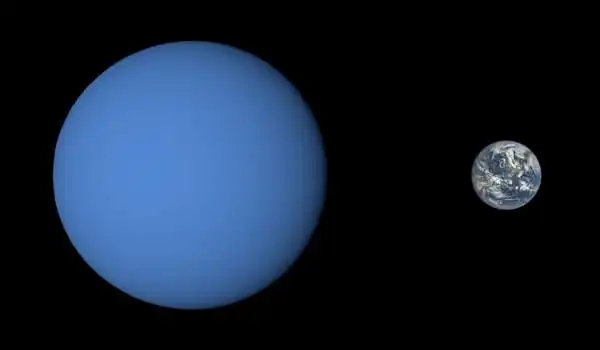
A team announced the identification of Rayleigh scattering in the atmosphere of this planet in 2013 using Large Binocular Telescope data with the LBC Blue and Red cameras. This discovery was confirmed in 2015 by a team using the Las Cumbres Observatory Global Telescope (LCOGT) network. The Las Cumbres researchers conclude in their work published in The Astrophysical Journal that the most feasible explanation for the scattering effect is an atmosphere composed primarily of hydrogen and helium, obscuring the exoplanet with dense clouds and hazes. Because of this scattering, the planet is considered to seem blue to the human eye.
The primary hydrogen atmosphere was defined in 2017–2019, with overall low metallicity, depleted methane, and evidence of water. It is most likely covering the entire Roche lobe of the planet. A metastable helium outflow was identified in Gliese 3470 b’s atmosphere in 2019 and 2020, indicating that the atmosphere is now leaving at a rate of 30,000-100,000 tons per second, or 0.16-0.53 Earth masses per billion years.
